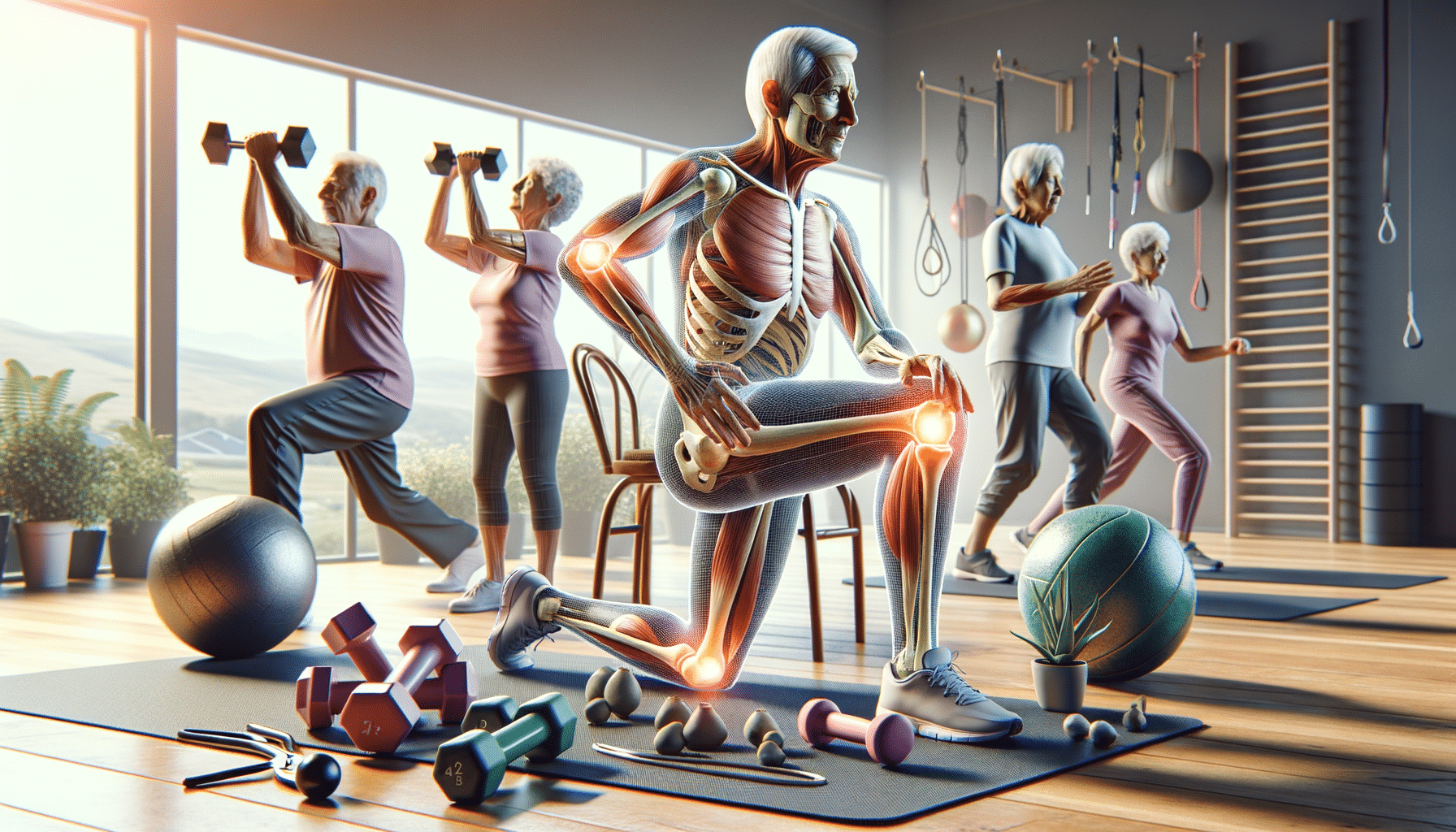
Top 5 Exercises for Seniors to Enhance Joint Health
Understanding the Importance of Joint Health in Seniors
As we age, maintaining joint health becomes increasingly crucial. Joints are the connections between bones, and they play a vital role in facilitating movement and providing support. Over time, wear and tear can lead to joint pain and stiffness, affecting mobility and quality of life. For seniors, this is particularly significant as decreased joint function can limit independence and increase the risk of falls and injuries. Studies show that regular exercise can help improve joint health by strengthening the muscles around the joints, increasing flexibility, and reducing inflammation.
Moreover, exercise can enhance the production of synovial fluid, which lubricates joints and reduces friction. This is especially beneficial for individuals with conditions like arthritis, where joint lubrication is compromised. By incorporating specific exercises into their routine, seniors can not only alleviate joint discomfort but also boost their overall physical and mental well-being.
Recognizing the importance of joint health, it’s essential for seniors to engage in activities that are both safe and effective. The right exercises can help maintain joint function, improve balance, and enhance quality of life. In the following sections, we will explore five exercises that are particularly beneficial for joint health in seniors.
Walking: A Simple Yet Effective Exercise
Walking is one of the simplest and most accessible forms of exercise for seniors. It’s a low-impact activity that can be done almost anywhere, requiring no special equipment. Walking helps improve cardiovascular health, strengthens muscles, and enhances joint flexibility. For seniors, regular walking can also promote better balance and coordination, reducing the risk of falls.
According to research, walking at a moderate pace for at least 30 minutes daily can significantly improve joint health. It stimulates blood flow to the joints, providing essential nutrients and oxygen, which can help reduce stiffness and pain. Furthermore, walking can aid in weight management, which is crucial for reducing stress on weight-bearing joints like the knees and hips.
For those new to exercise or experiencing joint pain, it’s advisable to start with short walks and gradually increase the duration and intensity. Walking on softer surfaces, like grass or a treadmill with cushioning, can also minimize impact on the joints. Incorporating walking into a daily routine can be a simple yet powerful way to enhance joint health and overall well-being.
Swimming: The Joint-Friendly Workout
Swimming is often hailed as one of the most joint-friendly exercises available. The buoyancy of water supports the body, reducing the stress on joints and allowing for a full range of motion without the risk of impact injuries. This makes swimming an ideal exercise for seniors, particularly those with arthritis or other joint-related conditions.
Engaging in swimming or water aerobics can help improve cardiovascular fitness, muscle strength, and flexibility. The resistance of water also provides a gentle way to build muscle without putting undue strain on the joints. Studies have shown that regular swimming can lead to improvements in joint pain and stiffness, enhancing overall mobility.
For seniors looking to incorporate swimming into their routine, local community pools often offer classes tailored to older adults, focusing on joint health and flexibility. Whether it’s swimming laps or participating in water aerobics, this form of exercise can be both enjoyable and beneficial for maintaining joint health.
Yoga: Enhancing Flexibility and Joint Function
Yoga is a practice that combines physical postures, breathing exercises, and meditation to promote overall health and well-being. For seniors, yoga can be particularly beneficial for enhancing joint flexibility and function. The gentle stretching and strengthening exercises in yoga help improve range of motion and reduce stiffness, making it an excellent choice for those with joint concerns.
Various studies have highlighted the positive effects of yoga on joint health. Regular practice can lead to increased flexibility, improved balance, and a reduction in joint pain. Additionally, yoga promotes relaxation and stress reduction, which can have a positive impact on chronic pain management.
For seniors new to yoga, it’s advisable to start with beginner classes or those specifically designed for older adults. Poses can be modified to accommodate individual limitations, ensuring a safe and effective practice. Incorporating yoga into a weekly routine can provide lasting benefits for joint health and overall quality of life.
Strength Training: Building Supportive Muscles
Strength training is an essential component of maintaining joint health, particularly for seniors. By building the muscles around the joints, strength training provides better support and stability, reducing the risk of injuries. It also helps in improving bone density, which is crucial for preventing osteoporosis.
Exercises such as leg lifts, arm curls, and seated rows can be performed using resistance bands or light weights, making them suitable for seniors. These exercises target key muscle groups that support the joints, enhancing both strength and endurance. Regular strength training can lead to significant improvements in joint function and pain reduction.
For those new to strength training, it’s important to start with low resistance and gradually increase as strength improves. Consulting with a fitness professional can help in designing a safe and effective program tailored to individual needs. By incorporating strength training into their routine, seniors can enjoy improved joint health and greater independence.

